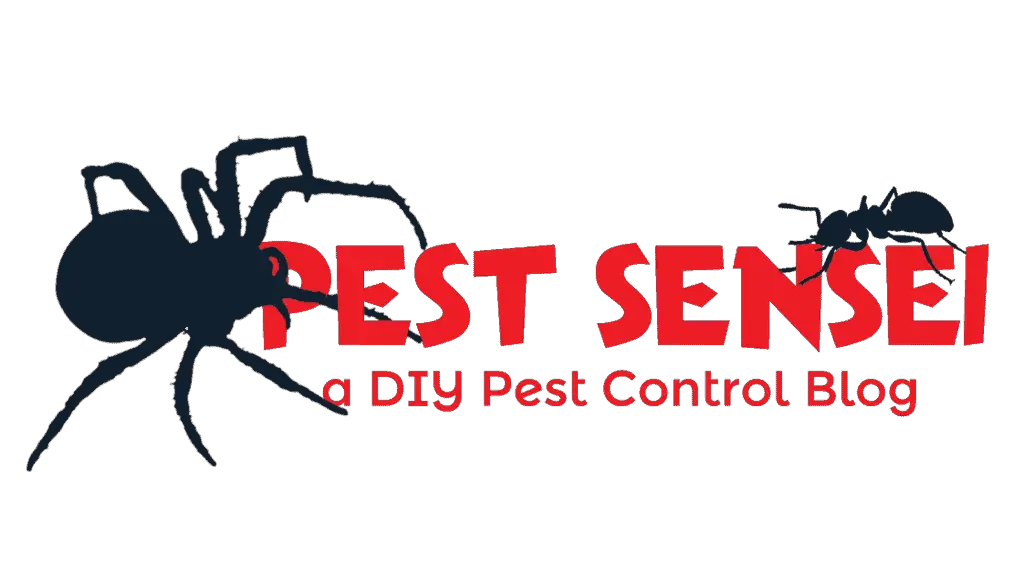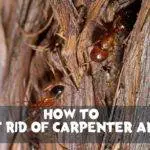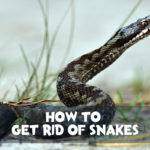Carpet beetles are common household pests that can damage your upholstery, clothes, and carpets, if not handled swiftly. In this guide, I will teach you how to get rid of carpet beetles quickly and effectively.
To get rid of carpet beetles, vacuum the infested furniture and carpets. Wash the infested clothes in the hot laundry. If required, treat the infested items and locations. To avoid future infestation, vacuum your carpet and sofa regularly. Put up window screens to stop the beetles from invading.
Continue reading to understand more.
- Basic Introduction to Carpet Beetles
- What Attracts Carpet Beetles?
- What are the Signs of Carpet Beetle Infestation?
- Where to Find Carpet Beetle Infestation?
- How to Treat Carpet Beetle Infestations?
- Disposing of Carpet Beetle Infested Belongings
- How to Prevent Carpet Beetle Infestation?
- Additional Informations
Basic Introduction to Carpet Beetles
Carpet beetles are also known as skin beetles, leather beetles, or khapra beetles. As the name implies, carpet beetles are creatures commonly associated with carpets. There are 4 life stages in a carpet beetle: egg, larva, pupa and adult. The larval stage is the one causing us trouble.
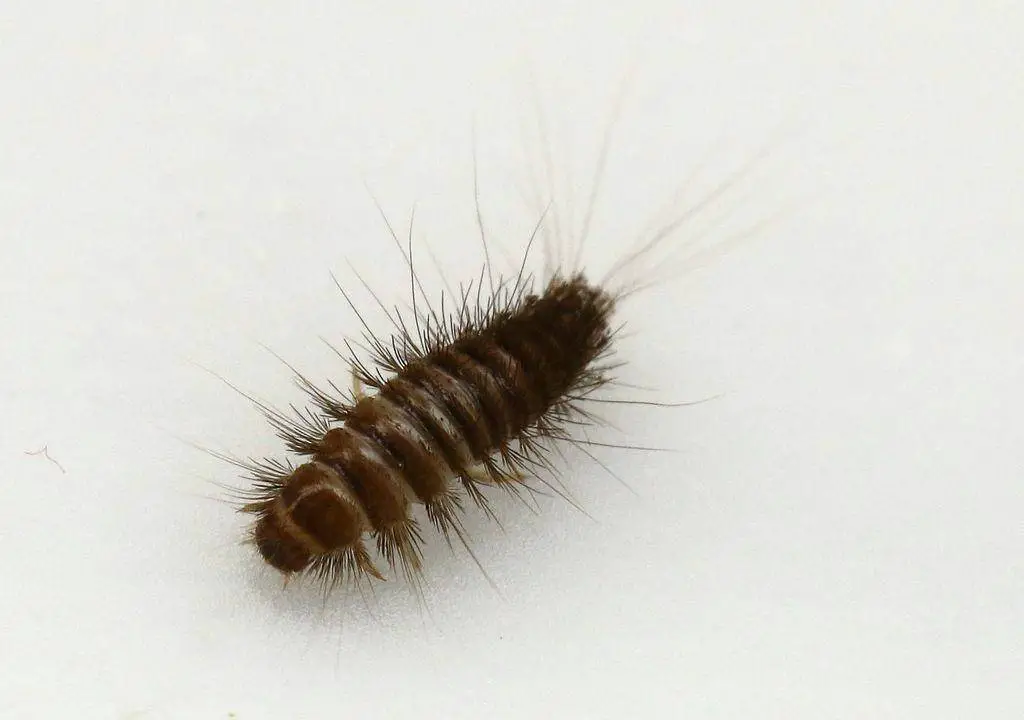
The carpet beetle larvae are about ⅛ to ½” in length depending on age and species. They look like worms that are covered with hairs on their light brownish or dark body. The hairs on older larvae are long, while younger larvae have shorter hairs.
Carpet beetle larvae feed mainly on keratin that can be found in fabrics and tapestries of animal origins. They also feed on hairs and dead insects, including dry-preserved insects, and occasionally cereals and grains.
It takes them 1-2 years to turn into adult beetles. In the larval stage, all they do is eat non-stop, causing extensive damage to your belongings if left unchecked.
Adult carpet beetles are small, about 1/16 to ⅛” in length. They can be black, or brownish with or without spots.
While the adult beetles do not attack fabrics and tapestries, they can produce more eggs and worsen the infestation.
You can learn more about carpet beetles on Wiki.
What Attracts Carpet Beetles?
Carpet beetles are attracted by the presence of suitable food sources and hiding places. Adult beetles are attracted by nectar and pollen of flowering plants. They may accidentally invade your house through windows or doors, and lay 50-100 eggs in dark places near the food source of their larvae, primarily keratin-containing items.
Once hatched, the carpet beetle larvae will start feeding on any items containing keratin – a protein found mainly in animals. That includes stuffed animals, fingernails, hairs, dead skin debris, and anything containing wools, silks or leathers such as carpets, clothes, sofa, cushions, and tapestries.
Carpet is particularly attractive to carpet beetle larvae because it collects a lot of skin and hair debris that serve as food for the larvae.
The carpet beetle larvae prefers to hide in dark places. They usually start feeding at hidden places such as underneath or edges of carpets and sofa, and cuffs or collars of clothes.
If eggs are laid near exposed grains or cereals, the hatched larvae can infest them.
What are the Signs of Carpet Beetle Infestation?
Carpet beetle infestations are often noticed when homeowners see the hairy larvae on their carpets or clothes. There are other telltale signs of infestation which are often unnoticed.
Carpet beetle larvae molt several times to turn into pupae. Each molt leaves shed skin – an evidence that they were there.
As the carpet beetle larvae eat through your belongings, they create irregular holes. They also defecate, resulting in many tiny dark spots.
If you spotted either shed skin, irregular holes or tiny dark spots on your belongings that contain wool, silk, or leather, you should inspect any susceptible belongings for the presence of carpet beetle larvae and take necessary corrective actions.
Where to Find Carpet Beetle Infestation?
It is important to find all the hiding spots of carpet beetles so that you can get rid of them for good. Otherwise, you will have to repeatedly treat them.
Carpet beetles are usually found at the edge of carpets, sofa and cushions, inside closets and other dark, secluded corners. In closets, they can hide in the collars, cuffs, and folds of clothes. They generally don’t move far from their feeding ground. Unless the infestation is heavy, they are rarely found in the open.
You can lay a few sticky traps around vulnerable belongings to monitor or catch any invading carpet beetles.
On rare occasions, carpet beetles can be found infesting nests of birds and rodents.
How to Treat Carpet Beetle Infestations?
In most cases, carpet beetle infestation can be easily treated with vacuuming and hot laundry. In cases where infestation is heavy, or vacuuming and hot laundry is not possible, you need to conduct chemical treatment using natural or synthetic products.
If the infestation is too heavy for you to handle, please engage a pest management professional. You can get non-obligated quotes from service providers near you through Networx.
Vacuuming
Vacuuming is the fastest way to remove carpet beetles. This should be your first action once you’ve found a carpet beetle infestation.
To ensure a thorough control, you should vacuum the whole house. Pay special attention to your carpets, sofa, and cushion even if they are not made of wool and leather. Focus on the edges, folds, and underneath. Those are usually where the carpet beetle larvae hide.
If you have a steam cleaner, steam over the vacuumed surfaces. The heat will help to kill remaining larvae and eggs.
Hot Laundry
Infested curtains and clothes can be treated by hot laundry. Wash them at the hottest possible temperature that your belongings can tolerate. This will kill the larvae and the eggs of the carpet beetles.
Carpet beetle larvae are usually found in clothes that you seldom wear. If you are not sure whether your clothes are infested, it is worth washing all of them in hot laundry.
Freezing
Small, infested articles that cannot be washed can be treated by freezing. Put the infested items in a sealed plastic bag, and freeze them for 1 week at 0 °F. You might be able to find cold storage rental services to treat larger infested items.
Bear in mind that some items become brittle when frozen. Let them return to room temperature before handling to avoid damaging those items.
Chemical Treatment – Natural and Synthetic
Chemical treatment is the last resort, and often necessary in dealing with heavy carpet beetle infestation. Certain wet formulations may leave stains on some surfaces. Do a test on a corner of your fabric before proceeding with the treatment.
Treatment for carpet beetles should focus on the edges and underside of carpets, along baseboards, cracks and crevices, folds of sofa or cushion, and other places where the carpet beetles are found.
When treating carpet beetles, it is important to focus on infested items. However, don’t treat your clothes, especially with synthetic chemicals.
Some sources advocate treating your gardens to kill the adult carpet beetles. I think it is overkill and unnecessary, unless you can see a lot of carpet beetles loitering in your garden.
Don’t waste your time trying vinegars, essential oils, garlic, or whatever home remedies that you can find online. They can kill carpet beetles when enough is applied, but they are generally ineffective and inefficient, unless they are specifically formulated to kill carpet beetles.
Here are the 3 products that I recommend getting to kill carpet beetles.
Non-Toxic Natural Diatomaceous Earth
Diatomaceous earth is a non-toxic, naturally occurring matter, and it is proven safe and effective in killing carpet beetles. Upon contact, it damages the exoskeleton of the carpet beetles, causing excessive water loss and ultimately death.
I recommend using Natural Guard Diatomaceous Earth. Apply a coating of diatomaceous earth onto your carpet, especially at the edges and underneath. Let it sit overnight before vacuuming.
Apply diatomaceous earth into cracks and crevices where the carpet beetles may lay their eggs, and along baseboards close to the infested locations.
Note that diatomaceous earth works only when it is dry.
Plant-Based Ecovenger® All Purpose
If you are looking for spray instead of dust, consider getting EcoVenger® All Purpose. It is a plant-based product containing geraniol, lemon grass, and cedar extract. It is formulated to better penetrate the exoskeleton of the carpet beetles and last longer than other plant-based products.
Spray EcoVenger® directly onto the carpet beetles as you see them. Edges of carpets, folds of sofas, cracks and crevices, and gaps behind baseboards are examples of other locations that you should treat.
EcoVenger® All Purpose kills carpet beetles (labeled as dermestids) upon contact. Although it provides some level of repellency, don’t expect it to prevent future carpet beetle infestation.
Synthetic Chemical – Temprid
If you have a heavy carpet beetle infestation, you might want to consider using Temprid (Ready-to-spray | Concentrate), which is a synthetic chemical. It contains 2 active ingredients with different modes of action to ensure fast knockdown and good kill rate.
Focus the spray along the edges of carpets, underneath carpets, cracks and crevices, and along the baseboards. Carpet beetles are killed immediately upon contact. On top of that, Temprid’s non-repellent and long lasting residue kill surviving or newly emerged carpet beetles when contacting the treated surface.
I recommend getting Temprid Ready-to-Spray. It comes in aerosol formulation, which means you don’t have to mix the pesticide by yourself. One canister is usually sufficient to resolve your carpet beetle infestation issue.
If you prefer to dilute your own insecticide, you can buy concentrated Temprid here. You will need a separate sprayer though.
Disposing of Carpet Beetle Infested Belongings
Sometimes, it is easier to dispose of carpet beetle infested belongings if the damage is too serious, and/or if they are cheap.
When disposing of such items, make sure you seal it in a plastic bag so that the infestation doesn’t spread elsewhere. If possible, label them so that whoever wants to pick them up is aware of the infestation.
How to Prevent Carpet Beetle Infestation?
To prevent carpet beetle infestation, conduct regular vacuuming and cleaning of your carpet and sofa to remove debris that provides food for the carpet beetles. Store clothes that you seldom wear in airtight containers.
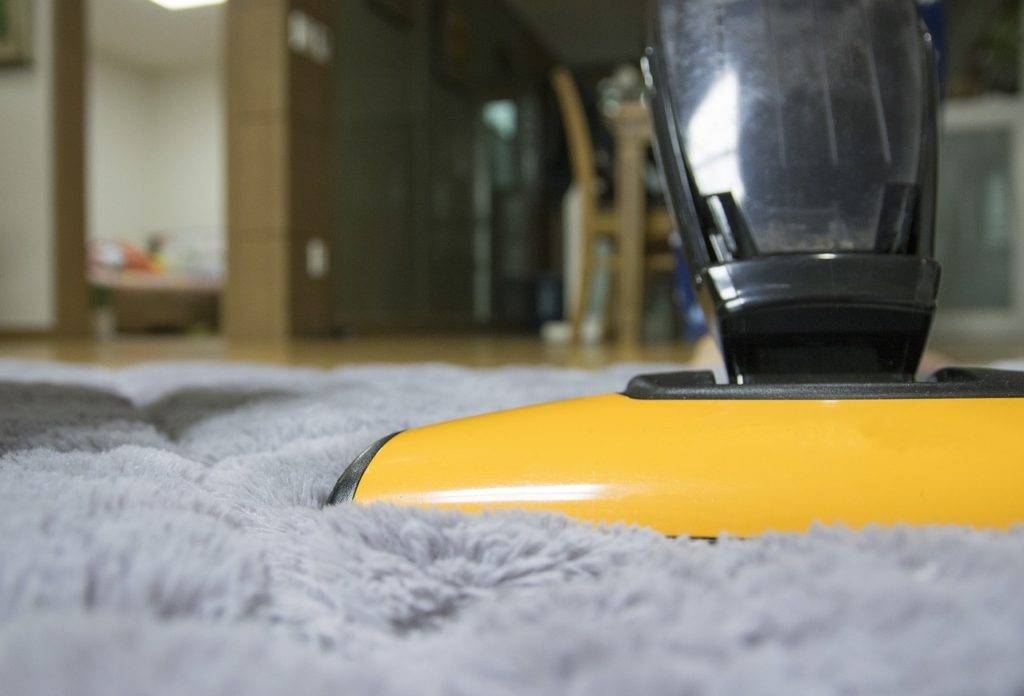
Consider reducing the use of items containing wool, silk, or leather. Use those with synthetic or plant-based fibers instead. Carpet beetles generally don’t damage synthetic or plant-based fibers unless they are heavily soiled.
Put on window screens and door screens to prevent the adult carpet beetles from flying into your house. When you buy flowers, check for the presence of beetles so that you don’t bring them back home.
Additional Informations
Are Carpet Beetles Dangerous to Humans or Pets?
Carpet beetles don’t bite or sting. They are not venomous and they don’t transmit diseases. However, they can cause allergy reactions through their shed skins and feces.
Can Cedar Closet Prevent Carpet Beetles?
Cedar closets are touted to prevent carpet beetle infestation thanks to the volatiles released by the cedar wood. While cedar volatiles are known to repel insects, the amount of volatiles released from the cedar closet decreases and becomes ineffective over time.
Using a closet that can be closed tightly to prevent carpet beetle intrusion is probably a more effective and cheaper option than using one made of cedar wood.
Can I use Moth Balls to Kill Carpet Beetles?
Yes, moth balls are effective in killing carpet beetles. You need to keep the infested items in an airtight container with the moth balls to ensure enough toxic gas is accumulated. Be sure to use only EPA-registered moth balls and follow the label instructions because moth balls are flammable and poisonous.
Read more about moth balls here.
